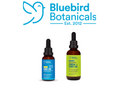The Evolution of CBD: From Ancient Remedies to Modern Wellness
CBD, or cannabidiol, has become a household name in recent years, celebrated because many believe it helps with relaxation, focus, and balance. But what is CBD, and how did it journey from ancient herbal remedy to modern-day wellness essential? Let's take a look at the history of CBD and how it evolved from ancient remedies to a contemporary wellness trend.
Key Takeaways
-
CBD has been used for medicinal purposes for thousands of years across different cultures.
-
The Industrial Revolution saw hemp being used in various industries, including textiles and medicine.
-
The late 20th century marked a shift in legal perceptions of cannabis, paving the way for CBD's modern resurgence.
-
Research into “what is CBD” has increased significantly, highlighting its potential applications in health and wellness.
-
The 2018 Farm Bill in the U.S. legalized hemp-derived CBD, making it widely accessible to consumers.
Introduction: CBD’s modern popularity
CBD, or cannabidiol, has exploded in popularity in recent years. It's gone from a relatively unknown compound to a household name, popping up in everything from oils and tinctures to gummies and skincare products. You can even find CBD gummies at your local health food store. But what's behind this sudden surge in interest?
The growing acceptance of cannabis and its derivatives plays a significant role. People are increasingly seeking natural ways to manage everyday wellness, and CBD fits the bill for many. It's seen as a way to potentially ease discomfort, promote relaxation, and support overall well-being without the psychoactive effects associated with THC.
Here are some factors contributing to CBD's popularity:
-
Increased awareness of potential benefits
-
Changing legal landscape
-
Growing interest in natural wellness solutions
It's important to remember that while CBD is widely available, it's still a relatively new area of research. As the market continues to evolve, it's crucial to stay informed and make informed choices about selecting the right CBD products for your needs.

Ancient Uses: CBD Through the Ages
If you find yourself asking, ‘what is CBD’, it helps to look way back. The history of CBD is deeply rooted in the long and fascinating evolution of hemp use. Hemp is one of the first plants ever cultivated by humans, dating back more than 10,000 years. It was prized across ancient civilizations not just for its durable fibers, but also for its early medicinal and spiritual applications.
In ancient Mesopotamia, hemp was used to make ropes, textiles, and paper. But it wasn’t only valued for industry. Its extracts also found their way into herbal remedies. Over in ancient Egypt, cannabis is mentioned in the Ebers Papyrus (circa 1550 BCE) for its potential to ease pain and inflammation. Meanwhile, in India, it was part of Ayurvedic medicine and religious rituals as early as 1000 BCE.
The Greek physician Dioscorides documented cannabis in his influential first-century text De Materia Medica, noting its potential use for earaches and other conditions. Similarly, in China, the ancient pharmacological guide Shen Nong Ben Cao Jing, dating back to around 2737 BCE referenced hemp as a treatment for malaria, gout, and even memory loss.
Across these early cultures, hemp wasn't just another crop. It played a pivotal role in everyday life from healing and spiritual practices to practical, daily use. These ancient references mark some of the earliest chapters in the history of CBD, long before the term “CBD” ever existed.
Hemp’s Role in Early Wellness
It’s fascinating to consider that thousands of years ago, before anyone asked “what is CBD”, ancient people were already exploring hemp’s effects on the human body. Though they may not have isolated cannabidiol or understood the endocannabinoid system, their documented uses reflect a deep respect for hemp’s potential.
Cultural Impact
From Asia to the Middle East to Europe, hemp’s impact was global. In Egypt, traces of hemp pollen have even been found in the tombs of pharaohs, suggesting it was used in burial rituals. In India, cannabis held spiritual importance and was believed to promote clarity and healing. And in medieval Europe, people believed hemp could calm seizures and muscle spasms which was an early sign of how this plant might support neurological wellness.
Industrial Revolution
The Industrial Revolution brought big changes, and hemp was right there in the mix. It wasn't just about textiles anymore; hemp's versatility really shined during this period. Rope for ships, canvas for sails, and even fibers for clothing.
Hemp in Manufacturing
With the rise of factories, hemp found new applications. Its strong fibers were perfect for making ropes, twines, and even durable fabrics needed in industrial settings. Hemp's strength and durability made it a go-to material for various manufacturing processes. It was a workhorse material, plain and simple. Hemp extracts were used in various tinctures and remedies, though the understanding of CBD itself had not yet emerged.
Medicinal Applications
While hemp was busy in factories, cannabis played a role in medicine. Tinctures and extracts became common, used for things like pain relief and inflammation. You could find cannabis-based medicines in pharmacies, though the understanding of cannabinoids like CBD was still pretty basic. It's interesting to see how it was used back then, even without the scientific knowledge we have now.
Challenges and Decline
Despite its usefulness, hemp faced challenges. The rise of synthetic fibers, like nylon, started to push hemp aside. Changing attitudes towards cannabis, fueled by the stigma and eventual prohibition, impacted hemp's overall use. It's a classic case of a natural product getting overshadowed by cheaper, mass-produced alternatives. The legal status of hemp vs marijuana became a big issue.
Modern Rediscovery: The Rise of CBD in Contemporary Wellness
The evolution of hemp use took a major turn in 1940 when American chemist Roger Adams successfully isolated CBD from the cannabis plant. This milestone marked the beginning of scientific exploration into what is CBD and how it might affect the human body.
The discovery of the endocannabinoid system in the 1990s provided a scientific basis for understanding how CBD interacts with our bodies, paving the way for distinguishing it from THC, the psychoactive component of cannabis. This distinction was crucial in the development of non-intoxicating therapeutic products.
Today, CBD is available in various forms, including oils, gummies, and creams, catering to diverse preferences and needs. Companies like Bluebird Botanicals offer a range of CBD products, emphasizing quality and transparency.
Ongoing studies continue to explore its potential in treating various conditions, contributing to a growing body of evidence. Consumers are seeking high-CBD cannabis strains for a non-psychoactive alternative, but it’s important to debunk common myths about CBD to ensure informed usage. Many are even exploring CBD for sleep and to help with relaxation. The modern market is seeing CBD components beyond cannabinoids being explored for their potential effects. It's important to clarify misconceptions about CBD and its safety.
Curious how CBD can fit into your wellness routine? Check out our article on How to Choose the Right CBD Products for Your Routine in 2025.
Conclusion
From ancient civilizations to modern wellness routines, the evolution of CBD reflects humanity’s long-standing connection with hemp. The history of CBD reveals just how versatile and culturally significant this plant has been throughout time.
As science catches up with tradition, research is beginning to uncover the many ways CBD may interact with the human body. Curious about what is CBD and how it might work? Take a look at recent studies from sources like the National Institutes of Health (NIH) to learn more.
Here are just a few reasons why CBD is becoming part of everyday wellness:
-
Increased research is helping us understand CBD's effects. Check out the research conducted on CBD to learn more.
-
Laws are evolving, making CBD more accessible to consumers across the U.S. and beyond.
-
Public interest is growing, with many people incorporating CBD gummies, tinctures, and creams into their daily routines
-
Product diversity is expanding, from CBD oil for dogs to bath bombs and beverages.
The future of CBD is still unfolding. Will it become a daily staple in more households? Will research unlock even more benefits? Only time will tell! But it’s clear that CBD has already made a lasting impact. Explore Bluebird Botanicals to learn more about CBD products, the evolution of hemp use, and how to make informed choices for your wellness journey.
Still confused on how to start adding CBD to your wellness regime? Start with these tasty CBD gummies from Bluebird Botanicals. They are discreet, pre-measured, and help you take the edge off.
Frequently Asked Questions
What is CBD and where does it come from?
CBD, or cannabidiol, is a compound found in the hemp plant. It is one of many cannabinoids in cannabis and is known for its non-psychoactive properties.
How has CBD been used in history?
The history of CBD tells us that it has been used for thousands of years in various cultures for its potential medicinal properties. Ancient texts mention its use in Chinese medicine around 2737 BC.
What role did hemp play during the Industrial Revolution?
During the Industrial Revolution, hemp was used for making ropes, textiles, and paper. It was also recognized for its potential medicinal benefits.
Why has CBD become popular in modern wellness?
CBD has gained popularity because many people are looking for natural alternatives for wellness.
Is CBD legal everywhere?
CBD legality varies by location. In the U.S., the 2018 Farm Bill legalized hemp-derived CBD with less than 0.3% THC, but laws can differ by state.
Can CBD cure diseases?
CBD is not a cure for diseases. While some studies suggest it may help with certain conditions, more research is needed to understand its effects.
How do people typically use CBD?
People use CBD in various forms, including oils, capsules, gummies, and topical creams. The method of use often depends on personal preference.
What should I consider before using CBD?
Before using CBD, it's important to consult with a healthcare provider, especially if you have existing health conditions or are taking other medications.
Disclaimer:
This article is for informational purposes only and is not intended to diagnose, treat, cure, or prevent any medical condition. The statements regarding CBD and sleep have not been evaluated by the Food and Drug Administration (FDA). Please consult with a healthcare professional before starting any new supplement.









